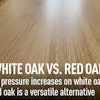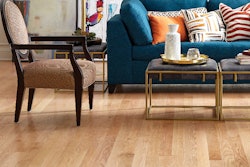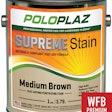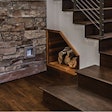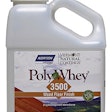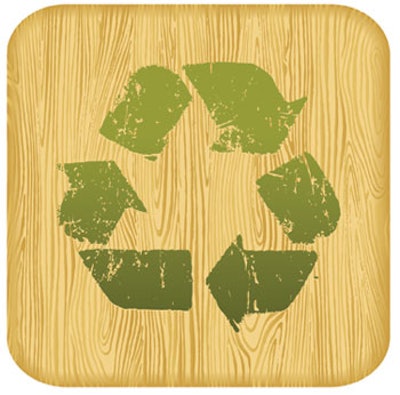
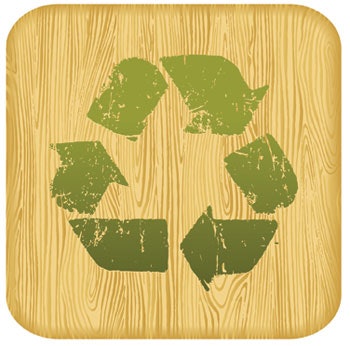
1) Choose High-Quality, "Green" Wood
By selecting high-quality wood flooring from a reputable manufacturer, you help ensure that the floor is going to last a long time. For prefinished floors, a high-quality finish will last longer, reducing the amount of resources put into the floor over time. Also, a thicker wear layer will endure multiple sandings, increasing the floor's lifespan and lessening the chances of the floor becoming scrap in a landfill.
Sustainability is another key consideration, and there is increasing demand for products that can help clients earn points for LEED (Leadership in Energy and Environmental Design), a third-party green building certification system developed by the U.S. Green Building Council that is the most widely accepted building certification. It is most prevalent for commercial projects but also has programs for residential buildings, renovations, and other types of projects as well. (For more on LEED, visit www.usgbc.org.) Below are some flooring options that can earn the favor of customers looking for sustainable materials; some also qualify for LEED points (for specific details on qualifying for LEED points, see "Taking the LEED" on page 36):
• Sustainable flooring: Despite last year's amendments to the Lacey Act, there are still products on the market that are illegally logged.
The safest option is to purchase certified flooring. Currently, the only certification that qualifies for LEED points is FSC (Forest Stewardship Council). The NWFA also offers its Responsible Procurement Program (RPP) to recognize companies that practice responsible forest management and are working toward offering FSC-certified products. Other flooring certifications include SFI (Sustainable Forest Initiative), CSA (Canadian Standards Association) and PEFC (Programme for the Endorsement of Forest Certification). If certified flooring isn't an option, the next safest bet is to buy domestic products, the vast majority of which come from sustainably managed forests.
• Reclaimed flooring: Reusing wood materials from old buildings and sunken logs is one of the most sustainable practices. Reclaimed flooring also qualifies for LEED points.
• Locally-sourced flooring: Local products minimize transportation costs and resources and, depending on the distance, may qualify for LEED points.
• Dead or dying trees: Trees that are diseased or dying, or those that are low-diameter from overcrowded, unhealthy forests, can be turned into flooring while helping to improve the ecosystem. (A great example of this can be seen in this month's Design Options article on page 44.)
• Bamboo flooring: Bamboo is considered green because it is highly renewable; it can be harvested every five to six years. However, there is controversy about the green aspect of bamboo because of the use of formaldehyde in some bamboo products and the carbon footprint of transporting the flooring from Asia. When selecting bamboo for clients who want a green floor, make sure that it is a high-quality product from a reputable manufacturer and that it is free of any added formaldehyde. Depending on your location, it may require less energy to import bamboo rather than wood from a domestic manufacturer. Bamboo flooring qualifies for LEED points because it fits the LEED definition of "rapidly renewable."
• Cork flooring: Because cork is harvested from the bark of the cork tree without killing the tree-the bark regenerates and can be harvested repeatedly-cork flooring has an impeccable sustainability story.
2) Reduce Emissions
Reducing or eliminating VOCs (volatile organic compounds) in wood flooring adhesives and finishes is key in turning your contracting business green. Additionally, in many areas, there are increasingly tougher laws mandating lower VOC emissions. Many products claim to be "VOC-free," but they may contain other toxic chemicals like cyanide. Carefully read the MSDS to see what is in the product you're buying. And be sure to properly dispose of finishes and other chemicals you use; most landfills have special days for chemical disposal. Here are points to keep in mind for finishes and adhesives:
• Low- or no-VOC adhesives: Choose adhesives that are low- or no-VOC and those that are formaldehyde free. Also, selecting an adhesive with a high spread rate saves resources, and using the recommended trowel ensures the product is applied as efficiently as possible.
• Low-VOC finishes: There are increasing numbers of green finish options on the market. Water-based finishes are the most prominent green option because of their low VOC levels. If you have clients who prefer the look of polyurethane, some manufacturers now offer water-based products that mimic the look of polyurethane finishes and are just as durable. Some other types of finishes, such as some natural oils, are also considered green.
3) Reduce, Reuse, Recycle
Beyond choosing green products, adopting green job-site practices can go a long way toward helping the environment. Before you fill the trashcan to the brim, think about what your company can do to reduce waste. Here are a few things commonly found on most job sites that often end up in the landfill:
• Cardboard boxes: Flooring boxes and other cardboard boxes from job-site products often end up in the landfill just because contractors don't take the time to recycle them.
• Stain Rags: Instead of using new disposable rags, reuse old towels, washcloths or T-shirts (be sure they are free of contaminants).
• Buckets: Clean out used buckets and reuse them for storing or transporting materials.
• Wood scraps: Whether you have scraps of old or new wood, you never know when you'll need to match existing flooring for a repair. Many contractors also create their own custom medallions, borders and parquets from wood scraps. You may be even able to find a fellow contractor on the Internet who needs the old flooring you're storing in your shop.
4) Be Efficient
Another green and money-saving job-site strategy involves eliminating inefficiencies in your business. Here are three examples of how to make your business more efficient:
• Drive less: Reducing your company's time on the road saves time and reduces vehicle emissions. Avoid scheduling appointments during rush hour to prevent sitting in traffic. One contractor in the busy Denver metro area, for example, only schedules his appointments between 10 a.m. and 3 p.m., or waits until the evening to see clients who need to schedule around work hours. Try to streamline appointments so salespeople and crews cover a specific territory instead of driving all over town. GPS units can also help in finding the most efficient route to your destination and reduce the chances of getting lost (and, as a bonus, the odds of having to ask for directions).
• Fuel-efficient vehicles: While it may not be practical to cram a big machine and a buffer into a subcompact hybrid vehicle, there are fuel-efficient vehicles on the market that can accommodate large equipment, and often these cars come with incentives or tax credits. Your staff who perform only sales or estimating duties may not need a larger car, and your company logo on a hybrid vehicle is a great form of green advertising.
• Go paperless: Running your business electronically not only saves resources, it also creates a more professional image. What's more, it looks more impressive to send estimates and invoices via e-mail rather than creating a barely legible hand-written statement.
As you put in place a few green practices, you'll find other ways to green your business and save money. Make being green a company-wide policy and offer incentives to employees who come up with green ideas of their own. Going green isn't just a tagline-it's the new way of doing business.
Sources for this article included Rob McNealy, AskaFloorGuy.com; Dan Harrington, EcoTimber; and Frank Potter, Stauf-USA Adhesive LLC. Catherine Liewen is the former managing editor of Hardwood Floors.












